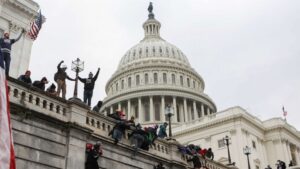This post is part of a series of posts that summarizes the book Angrynomics by Eric Lonergan and Mark Blyth.
If you found this post via search, it probably makes sense to start with the link to the full series, which is both here, and above.
Table of Contents
Angrynomics is fueld by how politicians broker in fear
This is not limited to any specific country, but I suspect is worse in some than in others.
As to myself, while I am a dual Canadian-American citizen, I have lived most of my life in the States and spent the last almost seven years in Texas and Arkansas.
As I follow the politicians who purport to represent me, I follow Senators Ted Cruz and Tom Cotton.
Both of whose social media strategies seem to be “get them as angry as you can”.
Per the increasing tribal partisan politics in the USA, both Cruz and Cotton promote that Democrats hate America, are doing everything they can to destroy it, and the only fix is to vote more Republicans into office.
To me, this presents an interesting chicken and egg question I don’t know how to answer.
Is the increase in anger being seen around the world the result of politicians intentionally working to inflame their supporters, or are the politicians merely trying to ride a wave of anger that is occurring without their effort, or is it an interplay between the two?
The list of politicians accused of stoking anger encompasses many nations around the world:
- Priti Patel in the UK
- The AfD in Germany
- Bolsonaro in Brazil
- Duterte in the Philippines
- Viktor Orban in Hungary
- Donald Trump in the USA
Are these people and their political parties the cause of our anger, or does our anger run deeper and these politicians are “merely” taking advantage of our anger for their political purposes (which is to stay at the very least relevant and ideally in power)?
And, is there a common thread to the politically tribal anger we’re seeing around the world?
Economic stagnation
It turns out there is a common thread and this is something I’ve seen Mark Blyth discuss at length in various videos on YouTube.
The common thread, around the world, is people seeing the economic benefits of productivity gains going to those who have money, and not going to those who work for wages.
To illustrate the extent to how these ideas cut across political party lines, below are two videos of Mark Blyth talking about the same issues.
One is him being interviewed by Tucker Carlson, the other is him being interviewed by Jimmie Dore.
Who is “us” and who is “them”
Then of course there is the issue of who we think of as “us” and who we think of as “them”.
I’ve seen videos of Mark Blyth talking about how around the world there are two common threads to the anger that is popping up.
The first is the economic stagnation mentioned above, which occurred over the past 40 years.
The second is the “arrival” of new people in the community over the same time period, where the new people are different in some way.
While I’ve seen a few videos of Mr. Blyth talking about this, there is so much video of him on YouTube now that I was unable to find one for this blog post.
But the basic point is when people experience 40 years of economic stagnation and during that same time period people arrive in the community who didn’t use to be there, it’s very easy to see the newcomers as “them” who are taking resources away from “us”.
And these two phenomena occurring together are highly correlated with public expressions of political tribal anger.
Purposely pushing tribalism
And this whole thing is amplified by political parties who are pushing political tribalism in an effort to make themselves more relevant and to stay in power.
And this is happening all over the world.



